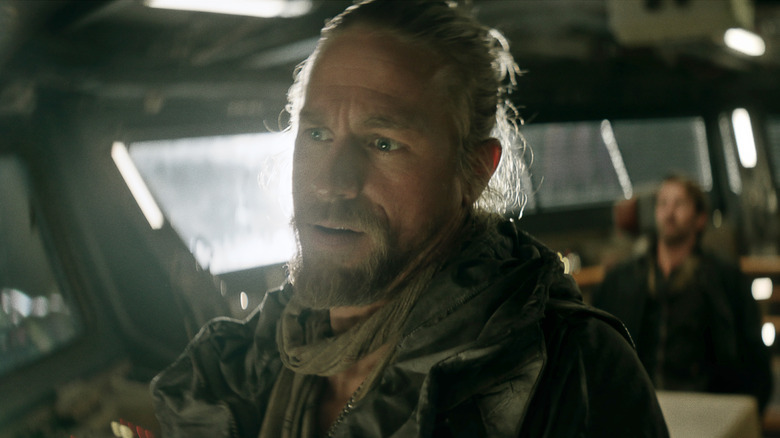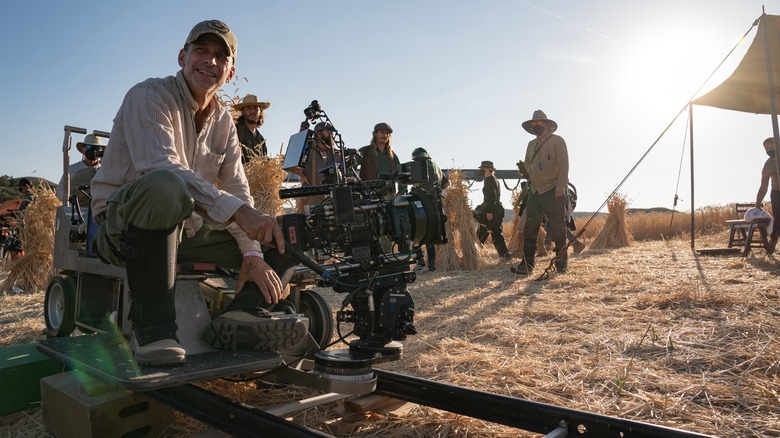Rebel Moon: The Real Reason Zack Snyder's Netflix Movie Is So Blurry
There are plenty of fitting words to describe Zack Snyder's space epic "Rebel Moon": sprawling, grandiose, ambitious — and blurry. Indeed, viewers of the Netflix movie may find themselves surprised by its noticeably poor image quality in certain parts — a strange problem for a blockbuster of this scale to have. Rest assured, it's not due to choppy streaming quality or low-tier TV sets. Rather, the film's blurriness was an intentional choice on Snyder's part.
In an interview with TechRadar, the "Rebel Moon" director revealed that he invented an entirely new camera lens out of parts from three existing models to shoot the film with. "[They were] based on the hard glass, which is behind the anamorphic elements of the Leica rangefinder series, plus [Leica's] Summilux and Noctilux lenses," Snyder said. "We found some Japanese anamorphic lenses from a company called Cineovision, which was set up in the 1960s. We took them apart, grabbed the anamorphic element, and attached them to the Summilux and Noctilux lenses."
The effect produced by Snyder's creation is a distinct, warped image that might appear rather blurry to the viewer at times. "For instance, there's a shot where Sam is talking to Jimmy," Snyder explained. "She's standing and he's seated, and the entire top of the frame is out of focus, but Jimmy is in full focus, so it has this weird vignetted accentuation. I love that cool aberration effect we achieved with the lenses."
Snyder's blurry lenses made post-production difficult
While the blurry quality of "Rebel Moon" can be chalked up to an artistic choice by Zack Snyder, it's clear from critical reviews and general online buzz that not everyone is a fan of the effect. In fact, the technique even frustrated some of the people working on the movie for making their jobs far more complex.
Snyder explained to TechRadar that the "Rebel Moon" visual effects team had to put in extra work to make the movie's CGI fit in with the image produced by the special camera lens. That's quite the intensive post-production task, considering that the film extensively employs CGI to craft its fantastical sci-fi world, with some shots being almost entirely composed of VFX. "They had to add aberration to their full CG shots," Snyder said.
Despite the complexity of the task, Snyder was intent on achieving a unique effect that permeates all of "Rebel Moon" — from its live-action elements to its CGI creations. "They'd mapped all the lenses, so they asked me, 'If this was on a 24mm film reel, the CGI would be out of focus. How do you feel about that?' and I'm like, 'Yeah, that's amazing,'" the director said. "Then they'd say, 'You know, we don't have to do that' and I'd reply, 'No, I really want it,' so it's really fun to see all of that come together, and incredibly satisfying to create this retro feeling I was trying to get with the overall look."

